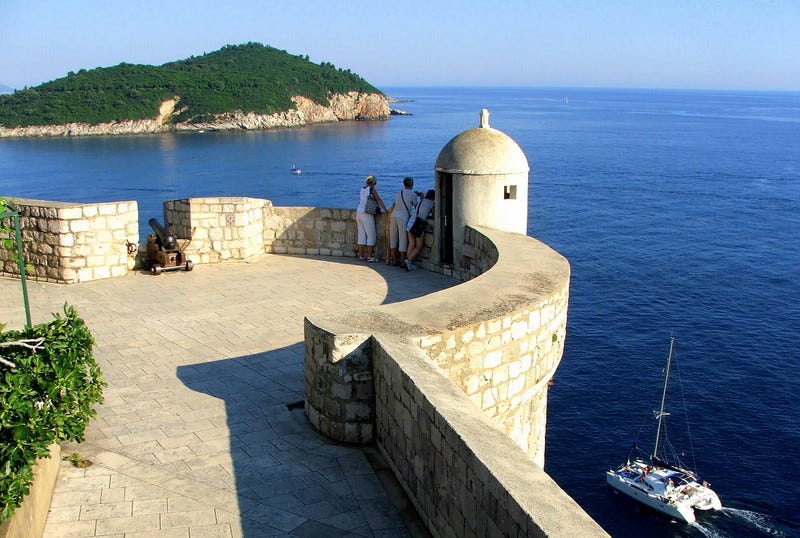Dubrovnik: what's behind the wall
CROATIA: A medieval melting pot where for centuries the 'east and west' have met to plot, build, fight, cook, and film a HBO blockbuster.
To newcomers, welcome. I’m Grant and this is my log of days and years spent as a vagabond. To returning readers, good to have you back.
The hot August day hardly cools as sunset looms. Sipping chilly Ozujsko beers at a hole in the wall cafe eases the heat. But this is no ordinary cafe. Stepping through its nondescript doorway is akin to entering another world. One minute you’re wandering the mediaeval alleyways within the UNESCO listed walled section of Dubrovnik’s Old Town, marvelling at the aristocratic palazzi and Baroque churches, and the next, literally emerging through a ‘hole in the wall’ onto a small landing perched high above the cobalt blue Adriatic Sea. (Instructions on how to find it later.) From there Cafe Buža unfurls down a series of terraced rock ledges hewn to the limestone cliffs with little more than narrow metal railings preventing you from tumbling towards Italy.


Once the gasps recede, find a seat, place your order, settle down and drink in a vista typical of the local area: yachts under a gentle tack, locals lounging around and the scent of char- grilled seafood not far off.
If you can tear yourself away from this sublime idyll, catch the cable car to the summit of nearby Mount Srd for a stunning panorama, which on a clear day, lets you appreciate the scale and layout of the walled city and takes in a large part of coastal Croatia. Then there’s the plethora of walking tours highlighting the numerous locations and settings used in HBO’s Game of Thrones.
Europe on a platter
Dubrovnik’s Old Town is one of those rare travel experiences; a pedestrian- only precinct, steeped in history (much of it under siege), bustling in parts but with pockets of serenity to get lost in. Wandering around imbues a sense of wonder, but also a sense of displacement, as if all of Europe at some stage had staked a claim here.
See the curling staircase above Gundulić Square and be instantly reminded of Rome’s Spanish Steps; note the 17th- century Baroque cathedrals abutting Gothic palaces or Renaissance mansions and think Budapest; linger in cafe Gradska Kavana and be teleported back to fin de siècle Vienna.
And the cuisine, like the architecture and language, reflects Dubrovnik’s geopolitical standing as a once-great maritime power wedged between East and West. While seafood abounds, Dalmatian food borrows heavily from Italy, but is earthier. Risotto becomes rizot (with a hint of Hungarian paprika) and wafer thin prosciutto becomes the exquisite air-dried prsut. (Add a fresh fig and sharp paski sir cheese for a taste of Greece.)
If you somehow tire of the superb fish, prawns, octopus, and the famous Ston oysters, there’s always goulash or Turkish kebab skewers (raznjici). Look for a local wine called Grk - that’s not a typo, but a divine white with the subtle sweetness of Sauternes.
That wall
Few cities are defined by a wall as much as Dubrovnik. The two-kilometre winding battlement surviving today is the result of what was first begun in the Middle Ages. Surviving the 1667 earthquake virtually intact, it reaches almost 25m at the highest point. The wide walkway on top, with its cafes, look-out posts, watch towers, forts and intimate views into the Old Town as well as out to sea, make a stroll along its ramparts mandatory.
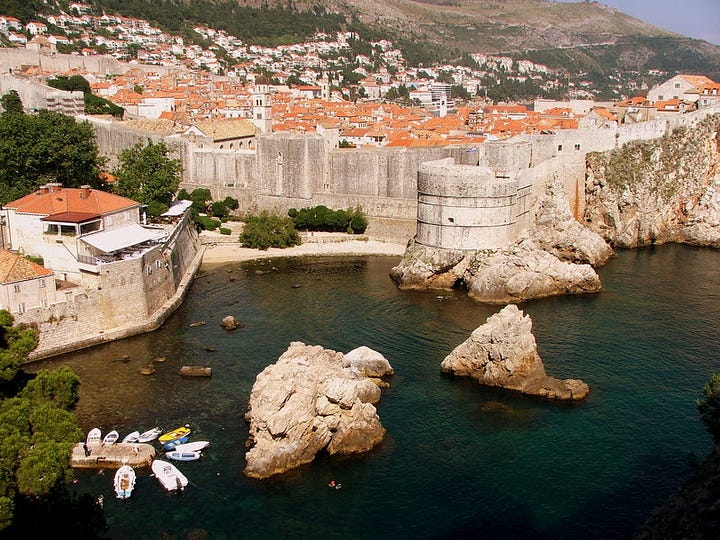
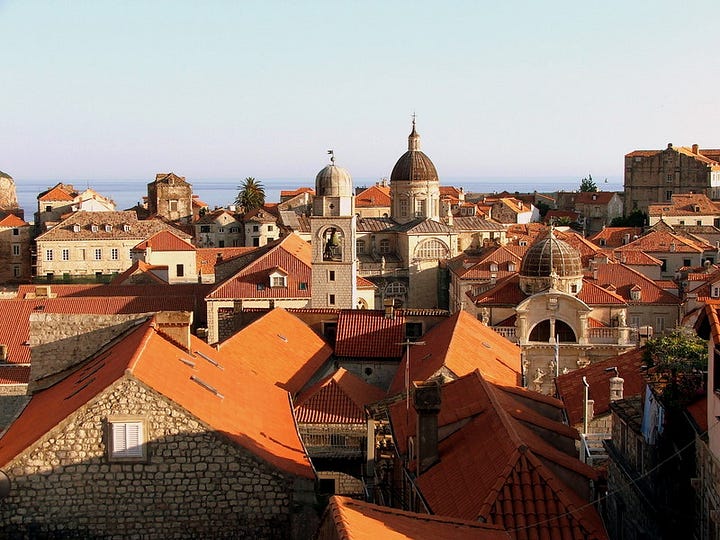
From this vantage point you can see the reddish terracotta tiles rippling across the town’s roofs. Look closely; more recent repairs using slightly different coloured tiles are one of the few reminders today of the seven-month artillery siege Dubrovnik endured during the breakup of the former Yugoslavia republic in the early 1990s.
Back down on the ground, it’s best to enter the Old Town through the west gate (Pila), which takes you across a wooden drawbridge. Past a series of left and right turns (another part of the wall’s defensive mechanism) comes the impressive Onofrio fountain. After that, the broad marble boulevard known as the Stradum – buffed to a smooth sheen by centuries of weather and walkers – stretches eastwards towards the harbour. Breathtaking.
The alluring difference
Sure, it’s a scene that could easily be replicated in a hundred different European locales, but in Dubrovnik’s Old Town it’s somehow different. Perhaps we should simply take George Bernard Shaw’s advice: “Those who seek paradise on Earth should seek it in Dubrovnik.”
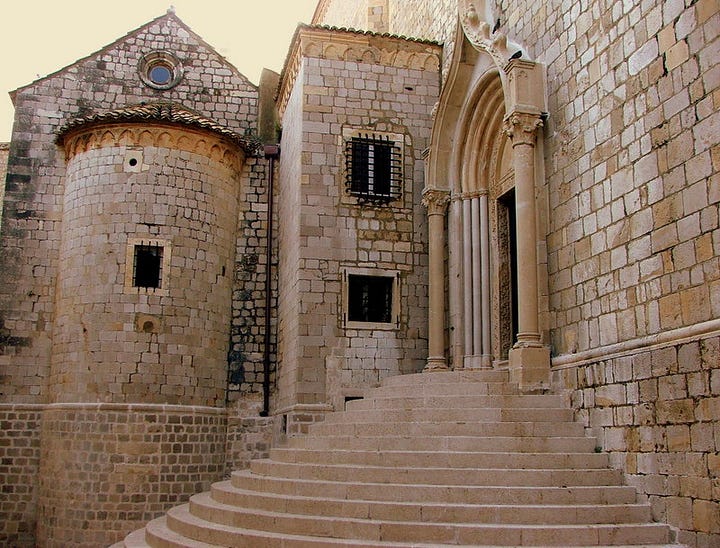
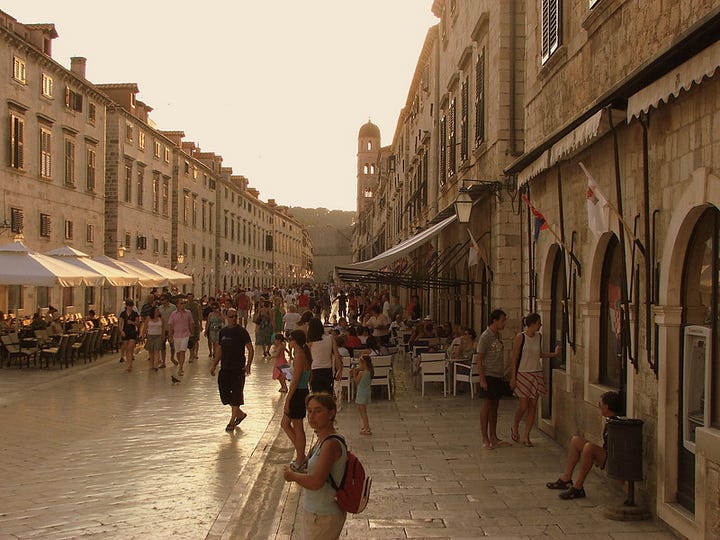
Plus, occupying prime Mediterranean real estate as it does, with the climatic and culinary advantages that that bestows, this unspoiled, sophisticated, cosmopolitan walled speck on the edge of Europe has one thing nowhere else in the world can claim: a cafe like Buža.
To get there (and this is best done in daylight hours the first time) head down the eastern end of the Stradum towards the 15th century Venetian clocktower. Near the Church of St Blaise, turn right and pass the farmers’ market (if early morning) heading up towards the Jesuit Church on Bošković Square. Games of Thrones fans will note this is where Cersei Lannister undertook her ‘walk of shame’.
From there, keep a look out for, and then follow the hand-painted signs pointing to “COLD DRINKS with the most beautiful view”.




